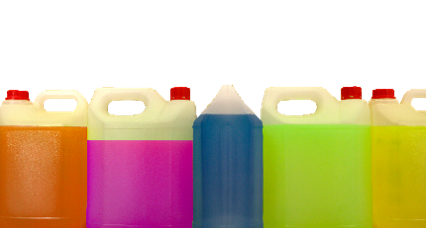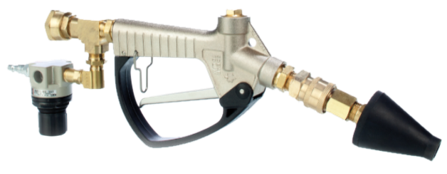Proper flushing is one of the most critical elements of cooling system maintenance. Yet it is often the most neglected service in the workshop today. Inadequate flushing can lead to premature water pump failure, resulting in warranty problems and frustrated customers. Read on to discover how flushing the cooling system positively affects the performance of the cooling system.
Benefits of flushing the cooling system
Gates is not a coolant manufacturer. Yet we do manufacture and supply coolant system components that may be damaged by the use of incorrect or contaminated coolant. So, we would like to stress the benefits of a clean cooling system that enables:
- more efficient engine cooling
- quicker engine warm up
- better fuel consumption
- longer lasting components
- reduced comebacks
- increased customer confidence
Coolant composition
Coolant contains:
- water
- base fluid
- additives or inhibitors
There are three main classes of coolant technology: Inorganic (Acid) Additive Technology (I.A.T.), Organic (Acid) Additive Technology (O.A.T.) and Hybrid Organic (Acid) Additive Technology (H.O.A.T.).
| Types |
Inhibitor Technology |
| Inorganic Additive Technology (IAT) |
Silicate |
| Organic Acid Technology (OAT) |
Organic Acid – Silicate Free |
| Hybrid Organic Acid Technology (HOAT) |
Silicate & Organic Acid |
Why flush the cooling system?
1. Coolant deterioration
Just like engine oil and transmission fluid, engine coolant deteriorates over time. It can also become contaminated with abrasive particles and foreign materials. These can form damaging deposits inside cooling hoses and other components. Properly flushing the system will remove those contaminants and deposits.
2. Mixed coolants
Besides creating damaging deposits, mixing coolants of different chemistries can lead to corrosion within the system. After all, the various coolant types work differently to protect the engine.
- Inorganic additives are used to plate cooling system surfaces. They form a thick protective layer but deplete over time. They are not very selective, which means they cover all surfaces regardless of what these surfaces are made of.
- Organic additives form chemical bonds with vulnerable surfaces. They make a thin, though extremely stable protective layer offering longer protection. They are selective, targeting only the areas that need protection.
Coolant selection would be easy if all vehicle manufacturers developed their systems with the same materials. But each manufacturer develops a factory fill coolant based on the cooling system component materials it will be in contact with. So, choice of the proper replacement coolant depends on the cooling system design. That is why Gates recommends always replacing the vehicle’s coolant with a coolant recommended by the vehicle manufacturer.
Do not rely on the coolant colour to make your choice. Coolants may have the same colour, even though their ingredients differ. The function of the dye is to help you spot a coolant leak. The correct answer to what coolant to use when, is again: always use the vehicle manufacturer’s recommended coolant.

No universal coolant colouring system
To find out more, please make sure to read our other article on cooling system maintenance.
How to flush and prevent water pump damage?
With a conventional drain, flush and refill much of the contaminated coolant and harmful debris is left behind. The procedure also does little to address the problem of severe accumulated debris.
A good flushing tool uses clean water and compressed air and cleans radiators, heat exchangers, hoses and engine blocks.
When carrying out repairs on the cooling system, you should:
- flush the system completely, using a Gates Power Clean Flush Tool (part number 91002).
- fill the system with the correct coolant or antifreeze. Dilute the correct coolant type with distilled water until you get a 50/50 mix, or use a prediluted coolant mixture of the correct coolant.
- bleed the system to ensure it is entirely free of air. (Modern systems may require diagnostic equipment to bleed them correctly.)
This is crucial to avoid contamination and water pump failure. Keep in mind that a coolant change is less expensive than having to replace cooling system components like radiators or heater cores. Moreover, most coolant packaging labels state that the coolant’s five- or ten-year guaranteed corrosion protection is only valid when a complete cooling system flush and fill is performed.

Procedure for cooling system repairs
- FLUSH
- FILL
- BLEED
Make sure the flush is completed with the old water pump still in place. Flushing after the new water pump is installed can lead to premature failure. After all, particles may get caught in the seals during the flushing procedure.

Gates Power Clean Flush Tool
For more information on the Power Clean Flush Tool, download our free brochure.
Spotting contaminated coolant
If the system has never been flushed and mileage is high, the coolant is probably contaminated, even if it looks clean. Not all contaminants make the coolant look dirty. Sand and other abrasive debris particles, aluminium corrosion particles and mineral content in the water won’t be obvious to detect. (To cite just three examples.)